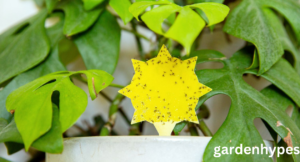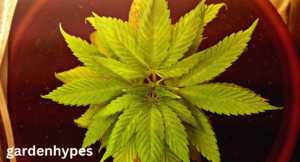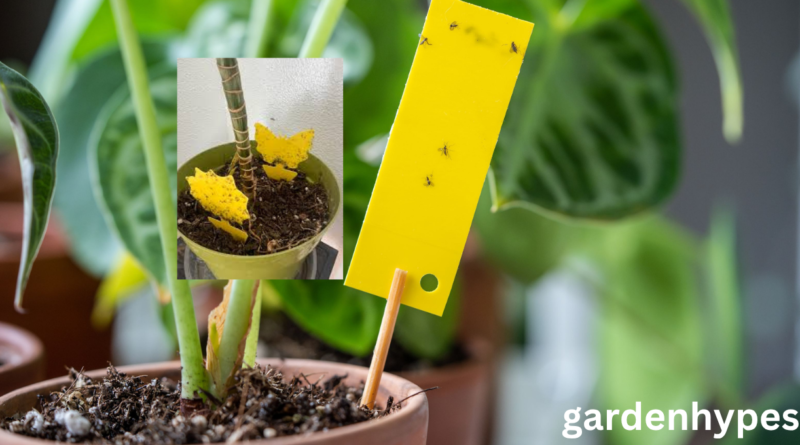Gnats in Plants Causes Prevention & Natural Removal Tips
Houseplants bring life and beauty to a space, but sometimes they also bring along tiny uninvited guests—gnats in plants. These small flying insects can quickly turn your indoor plant collection into their breeding ground, and before you know it, they’re hovering around your pots, your kitchen, and even your coffee mug. While gnats might seem like a small nuisance, they can actually cause serious damage to your plants if left untreated. The good news? You can eliminate them naturally without resorting to harsh chemicals. In this guide, we’ll explore exactly what gnats are, why they’re attracted to your plants, how to identify an infestation, and the best ways to prevent and remove them for good.
click in link Elderberry Look Alikes
Understanding Gnats in Houseplants
If you’ve noticed small black or grayish flies hovering around your plants, chances are you’re dealing with fungus gnats. These pests are more than just annoying—they breed in soil and can harm your plant’s roots.
What Are Fungus Gnats?
Fungus gnats are tiny insects, usually about 1/8 inch long, that resemble small mosquitoes. Despite their delicate appearance, they are stubborn pests. Adult gnats are harmless to humans and pets—they don’t bite—but their larvae can cause damage by feeding on organic matter in the soil, including plant roots. Their life cycle is rapid, meaning an untreated infestation can multiply in just weeks.
They thrive in damp environments, which is why overwatered houseplants become their favorite hangout spot. Fungus gnat eggs hatch within days, and larvae live in the soil feeding for up to two weeks before turning into adults. This constant cycle makes it difficult to eliminate them unless you target both the adults and the larvae.
How They Differ from Fruit Flies
Many people mistake fungus gnats for fruit flies, but they’re different pests. Fruit flies are more rounded, attracted to ripened fruits, and hover around kitchens and garbage bins. Fungus gnats, on the other hand, are slimmer, have longer legs, and prefer the moist soil of houseplants. Knowing which pest you’re dealing with is important because the treatment methods differ—fruit flies require cleaning up food sources, while gnats require soil management.
Why Gnats Are Attracted to Your Plants
Gnats don’t randomly appear—they’re drawn to specific conditions that make your potted plants an ideal home. Understanding why they come will help you prevent them in the first place.
Moisture and Overwatering
Overwatering is the number one reason for gnat infestations. Fungus gnats need moist soil to lay their eggs, and larvae require dampness to survive. If your soil stays wet for too long, it becomes a perfect breeding environment. Plants that sit in waterlogged saucers or pots without drainage are especially at risk.
click in link Elderberry Look Alikes

Organic Matter in Soil
Gnats love soil that’s rich in organic matter like compost, decaying leaves, and peat moss. While organic-rich soil is generally good for plant nutrition, it can also be a buffet for gnat larvae. They feed on this material as they grow, which is why potting mixes with high amounts of organic content can attract them.
Poor Drainage Issues
If your pots don’t have proper drainage holes, excess water will collect at the bottom, creating a damp environment ideal for gnats. Even if you water carefully, poor drainage can cause a hidden water buildup that encourages pests. The soil surface may look dry, but underneath, it could be soggy and perfect for larvae.
Identifying a Gnat Infestation
Catching a gnat problem early is key to stopping it before it spreads.
Visible Signs in Soil and Around Plants
Adult fungus gnats are often the first sign of trouble. They’re most visible when you water your plants because the disturbance makes them fly out of the soil. You might see them hovering near the pot or resting on leaves. In severe infestations, you’ll notice them all around your home.
How to Spot Gnat Larvae
Larvae are tiny, white, and worm-like with black heads. You can find them by gently scraping away the top inch of soil. They tend to hide in moist, dark areas of the potting mix. Another trick is to place a slice of raw potato on the soil surface—within a day or two, larvae will gather under it, making them easier to spot.
How Gnats Affect Plant Health
While adult gnats are mostly a nuisance, their larvae can be destructive.
Root Damage Caused by Larvae
The larvae feed on organic material, but they also chew on fine plant roots. This damage can stunt plant growth, cause yellowing leaves, and lead to overall decline. In seedlings or young plants, root damage can be fatal because they rely heavily on small root hairs for nutrient uptake.

Secondary Fungal Infections
Damaged roots are more vulnerable to fungal diseases. The wounds created by larvae become entry points for harmful pathogens, which can lead to root rot. Once root rot sets in, it’s much harder to save the plant. This is why addressing a gnat problem promptly is crucial—not just for pest control but for plant health in the long run.
click in link Elderberry Look Alikes
faqs
- Are gnats harmful to my plants?
Adult gnats aren’t directly harmful—they don’t bite or feed on the plant itself. However, their larvae live in the soil and feed on organic matter, including delicate plant roots. Over time, this can weaken your plants, stunt growth, and make them more vulnerable to disease. - How can I tell if I have fungus gnats or fruit flies?
The easiest way to tell is by location and shape. Fungus gnats are slender, with long legs, and usually hover around moist plant soil. Fruit flies are rounder, shorter, and tend to stay near ripe fruit, vegetables, or trash bins. - Will letting my soil dry out kill gnats?
Yes, partially. Fungus gnat larvae need moist soil to survive, so drying the top inch or two of soil can help break their life cycle. However, you’ll still need to trap or remove adult gnats to fully eliminate the infestation. - Can I use vinegar to get rid of gnats in plants?
You can use an apple cider vinegar trap to catch adult gnats. Simply mix apple cider vinegar with a drop of dish soap in a shallow bowl and place it near your plant. The scent attracts them, and the soap breaks the surface tension so they sink and drown. - How long does it take to get rid of a gnat infestation?
With consistent treatment—like improving watering habits, using sticky traps, and applying natural soil treatments—you can see a major reduction in 1–2 weeks. Completely eliminating them may take up to a month, depending on the severity.
